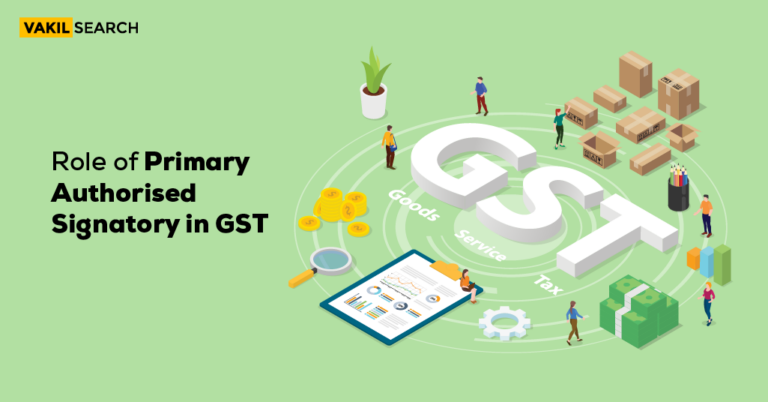In India, the new GST rates for different goods and services are broken down into four different groups. Read this article to understand what the GST rate is and how it has changed over time.
Overview
New GST rate changes hit businesses and trade groups. This is because the rates have changed. Everyone, from businesses to customers, looks at how they’re doing because of this change. In India, the GST rates for different goods and services are broken down into four different groups: 5% GST, 12 % GST, 18% GST, and 28% GST. These are the four groups of goods and services. In this article, we explain what the GST rate is and how it has changed over time.
What is GST?
Goods and services that are sold under each of the three tax laws are taxed at that percentage rate of their value. GST full form in lateral terms, constitutes the Goods and Service tax. This is called the “GST rate.” A business that is registered with the GST law must charge GST on the value of the goods or services it sells. Invoices must show the amount of the tax. If you buy something from one state to another, the tax rate in both CGST and SGST is about the same. When it comes to interstate transactions, the GST rates for IGST is about the sum of the CGST and SGST rates in the new GST rate.
Who Is the GST Council?
The GST Council of India is in charge of GST implementation in India. The GST Council is a team of individuals that collaborate to guarantee that the country’s goods and service tax system is correctly implemented. They decide on tax rates and the manner in which the tax will be applied. In order to make adjustments, the GST council compiles recommendations and regulations into one form before sending notifications and circulars to its departments and the finance ministry.
What Are GST Slabs?
GST slabs are nothing but the tax bracket based on which your GST is determined. The new GST rates are set at 5%, 12%, 18%, and 28%. This is how the tax structure for common-use goods is going to work:
Goods & Services
| Products | Taxation rates |
|
0% |
|
5% |
|
12% |
|
18% |
|
28% |
How Does New GST Rate Increase and Decrease?
Consumers would now have to pay more tax on most of the goods and services they buy. Most of the things we buy every day now pay the same or a little more tax. In addition, the implementation GST Registration Process (GST full form: Goods and Services Tax) comes with a cost for people to keep up with the rules. It looks like the small-scale manufacturers and traders, who have also protested against the same, will not be able to afford to pay for this. There is a chance that they will charge more for their goods.
Long-term, it is thought that GST will not just cut taxes but also set minimum tax rates. There are only two or three tax rates in countries where the Goods and Service Tax has helped to change the economy. One is the “mean” rate, and there are lower tax rates for essential goods and higher tax rates for more luxurious goods.
In India, there are now five different types of slabs, each with different new GST rates. There is an integrated rate, a central rate, and a state rate, which all have their own set of rules. A tax is also charged. The government doesn’t want to risk losing money by lowering or lowering the rates.
Taxes are going to play a very vital role in shaping the economy and hence, the structuring of tax slabs and changes in the GST rates over and over is not going to help in curbing inflation. Thus pointing out that these tax structures are here to stay for a longer duration of time.
It is very likely that the government will make more money from taxes because it will be able to reach more people. The government’s fiscal deficit is also likely to stay in check. Exports would also rise, and FDI (Foreign Direct Investment) would also rise. With the most important tax reform in the history of the country, business leaders think that the country will be able to do more business.
New GST Rate Slashed on Covid 19 Essentials
On Saturday, the Goods and Services Tax (GST) Council decided to reduce the tax rates on COVID-related medicines, oxygen concentrators, and testing kits. However, vaccines were not included in the rate cut and will remain taxed at 5%.
The Council also approved the tax rates proposed by the Group of Ministers (GoM) for electric furnaces used in crematoriums, temperature-checking instruments, and ambulances. These changes will come into effect soon and will be valid until September 30th.
Revision of New GST Rates Announced in 45th GST Council Meeting
When the 45th GST Council meeting took place on 17 September 2021, it was called the 45th meeting. People in some groups had their tax rates changed. GST rates will change on 1 October 2021. Some of the changes that were made have been reflected in the table below.
| Category | New Rate | Old Rate |
| Railway goods, locomotives, and parts under Chapter 86 | 18% | 12% |
| Pens | 18% | 12% |
| Metal concentrates and ores | 18% | 5% |
| Renewable Energy Devices | 12% | 5% |
Conclusion
On top of everything else, the government should work to help the people who aren’t as well-off, like small-scale manufacturers and traders. How to lower the total cost of compliance must be found. Changes may be made for the good of everyone. The new GST rate in India will be good and simple only when the whole country works together to make it work.
Frequently Asked Questions
What is the new GST rate for gold?
The new GST rate for gold is 3%
Who decides the GST rate in India?
The Central Government decides the GST rates in India for various products.
What is the new GST rate for mobile phones?
The new GST rate for gold is 18%
What is the new GST rate for laptops?
The new GST rate for gold is 18%
What is the new GST rate for cement?
The new GST rate for gold is 28%
How do the new GST rates impact the pricing of commonly used items such as televisions?
The new GST rates can influence the pricing of commonly used items like televisions. Depending on the revised rates, there may be fluctuations in the cost of these electronic goods, impacting both consumers and the industry.
Are there any specific changes in the GST rates for essential commodities like milk, LPG cylinders in the recent updates?
Essential commodities like milk and LPG cylinders may experience specific changes in GST rates. The government periodically reviews and adjusts rates, aiming to balance revenue collection while ensuring affordability for consumers.
Is there a standard GST rate applicable to all products and services, or are there variations based on categories?
GST rates are not standardised across all products and services. Variations exist based on categories, with different rates applied to essentials, luxury items, and services. This nuanced approach allows for a more tailored taxation system.
What is the highest GST rate implemented in India as per the latest updates in 2023?
As of the latest updates in 2023, the highest GST rate in India is 28%. Certain goods and services, often categorised as luxury items, fall under this top tier of the GST structure.
How does the GST rate differ for luxury items like BMW cars compared to everyday commodities?
The GST rate differs significantly for luxury items like BMW cars compared to everyday commodities. Luxury goods generally attract higher GST rates, contributing to the government's revenue while placing a proportional tax burden on premium items.
Do GST rates remain constant?
GST rates are not static; they undergo periodic revisions. The government may adjust rates to address economic conditions, industry demands, and revenue considerations. Staying informed about these changes is crucial for businesses and consumers alike.










